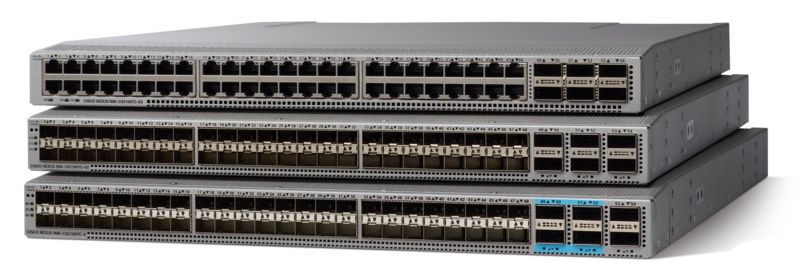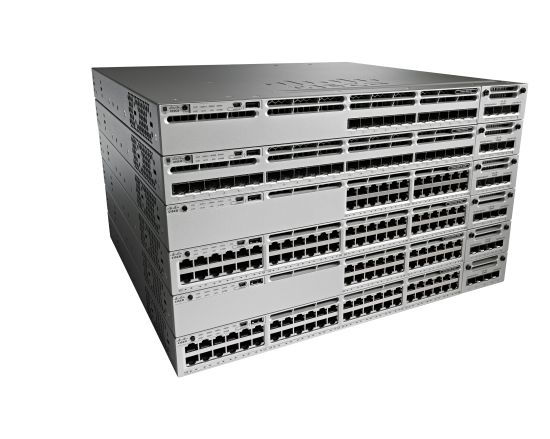A core switch is a high-performance networking device designed to aggregate traffic from multiple access switches and distribute it across various network segments or subnets. It operates at the backbone of the network topology, serving as the primary junction point where different parts of the network converge.
Key Functions and Characteristics:
Aggregation and Distribution: The core switch aggregates traffic from access switches located throughout the network and distributes it to the appropriate destinations, such as servers, storage devices, or other network segments.
High Bandwidth and Throughput: Core switches are engineered to handle large volumes of data traffic efficiently, providing high-speed connectivity and ensuring minimal latency. They typically feature multiple high-speed interfaces, such as 10 Gigabit Ethernet, 40 Gigabit Ethernet, or 100 Gigabit Ethernet, to accommodate the bandwidth requirements of modern networks.
Redundancy and Resilience: Core switches often incorporate redundancy features to enhance network reliability and availability. This may include features such as hot-swappable power supplies, redundant cooling systems, and support for link aggregation protocols like LACP (Link Aggregation Control Protocol) to ensure seamless failover in case of hardware or link failures.
Scalability: Core switches are designed to scale seamlessly as the network grows, supporting a large number of network devices and accommodating increasing bandwidth demands. They may feature modular designs that allow for easy expansion and upgrades to meet evolving network requirements.
Quality of Service (QoS): Core switches often include advanced QoS mechanisms to prioritize critical traffic and ensure optimal performance for mission-critical applications. QoS features enable administrators to allocate bandwidth based on predefined policies, ensuring that important data packets receive preferential treatment over less critical traffic.
Security Features: Core switches may incorporate robust security features to protect the network against unauthorized access, data breaches, and cyber threats. This may include features such as Access Control Lists (ACLs), VLAN segmentation, encryption, and intrusion detection/prevention systems (IDS/IPS).
Importance in Network Architecture:
The core switch serves as the backbone of the network architecture, providing the essential connectivity and routing capabilities necessary for efficient data transmission within the organization. Its strategic placement at the core of the network topology ensures that all network segments can communicate seamlessly, facilitating collaboration, data exchange, and resource sharing across the enterprise.
Conclusion:
In conclusion, a core switch is a critical component of network infrastructure, serving as the central hub for data traffic within an organization’s network. With its high bandwidth, scalability, redundancy, and advanced features, the core switch plays a vital role in ensuring the reliability, performance, and security of modern networks, enabling organizations to meet the evolving demands of their digital operations.

1
Cisco Catalyst 9500 Series

Cisco’s Catalyst 9500 series switches offer high-performance, modular design, advanced features, and support for Cisco’s IOS XE operating system, making them suitable for demanding core networking environments.
2
Arista Networks 7500R Series

Arista’s 7500R series switches are known for their high-speed, low-latency performance, scalability, and support for advanced features such as VXLAN and EVPN, making them ideal for large-scale datacenter and enterprise core deployments.
3
Juniper Networks QFX Series

Juniper’s QFX series switches provide high-density, high-performance switching, advanced features for datacenter fabrics, and support for Junos operating system, making them suitable for core networking in enterprise and cloud environments.
Datasheet:
QFX5110 10/40GbE switches:
qfx5110-ethernet-switch-datasheet.pdf (juniper.net)
QFX5120 line offers 1/10/25/40/100GbE switches
Datasheets:
QFX5200 line offers line-rate, low-latency 10/25/40/50/100GbE switches
qfx5200-switch-datasheet.pdf (juniper.net)
QFX5210 line offers line-rate, low-latency 10/25/40/100GbE switches
qfx5210-switch-datasheet.pdf (juniper.net)
QFX5220 line offers up to 400GbE interfaces switches
4
Extreme Networks SLX Series

Extreme Networks’ SLX series switches offer cloud-scale architecture, programmability, and automation capabilities, making them suitable for modern core networking deployments requiring scalability and flexibility.
5
Dell EMC PowerSwitch S-Series

Dell EMC’s PowerSwitch S-Series switches offer high-density, high-performance switching, modular design, and support for software-defined networking (SDN) solutions, making them suitable for core networking in enterprise environments.
6
Cisco Catalyst 9600 Series

Cisco’s Nexus 9000 series switches offer high performance, scalability, and advanced features tailored for datacenter environments, including support for Cisco’s Application Centric Infrastructure (ACI).
7
HPE FlexFabric Comware Series

Hewlett Packard Enterprise’s FlexFabric series switches provide high-performance, scalability, and support for advanced datacenter features such as Virtual Extensible LAN (VXLAN) and network virtualization.
Quickspecs
HPE 5920
HPE FlexFabric 5920 Switch Series
HPE 5930
HPE FlexFabric 5930 Switch Series
HPE 5940
HPE FlexFabric 5940 Switch Series data sheet
HPE 5945
HPE Networking Comware Switch Series 5945
HPE 5960
HPE Networking Comware 5960 Switch Series
HPE 5980
HPE Networking Comware Switch Series 5980
8
Mellanox Spectrum Series (nvidia)

Mellanox’s Spectrum series switches feature high-speed Ethernet connectivity, low-latency, and advanced features optimized for modern datacenter architectures, including support for RDMA over Converged Ethernet (RoCE).
Models and Datasheet:
NVIDIA SPECTRUM SN2000 | DATASHEET
SN2010- 18 SFP28 25GbE + 4 QSFP28 100GbE
SN2100 – 16 QSFP28 100GbE
SN2201 – 48 RJ45 + 4 QSFP28 100GbE
SN2410 – 48 SFP28 25GbE + 8 QSFP28 100GbE
SN2700 – 32 QSFP28 100GbE
Models and Datasheet:
NVIDIA Spectrum SN3000 Series Switches | NVIDIA (widen.net)
SN3420 – 48 SFP28 25GbE + 12 QSFP28 100GbE
SN3750-SX – 32 QSFP56 200GbE
SN3700C – 32 QSFP28 100GbE
SN3700 – 32 QSFP56 200GbE
Models and Datasheet:
NVIDIA Spectrum SN4000 Series Switches
SN4410 – 24 QSFP28-DD 100G + 8 QSFP-DD 400GbE
SN4600C – 64 QSFP28 100GbE
SN4600 – 64 QSFP56 200GbE
SN4700 – 32 QSFP-DD 400GbE
9
HPE Aruba Networking CX Series

Simplify the complexities of deploying and managing modern enterprise networks with AI-powered automation and built-in security delivered by network switches that scale from edge to the cloud.
Models and Datasheet:
CX8320
HPE Aruba Networking CX 8320 Switch Series Data Sheet (arubanetworks.com)
CX8325
10
Brocade VDX Series

Brocade, now part of Broadcom/Extreme offers the VDX series switches with features such as low-latency, high-density 10/25/40/100 Gigabit Ethernet interfaces, and support for TRILL-based fabric architectures.